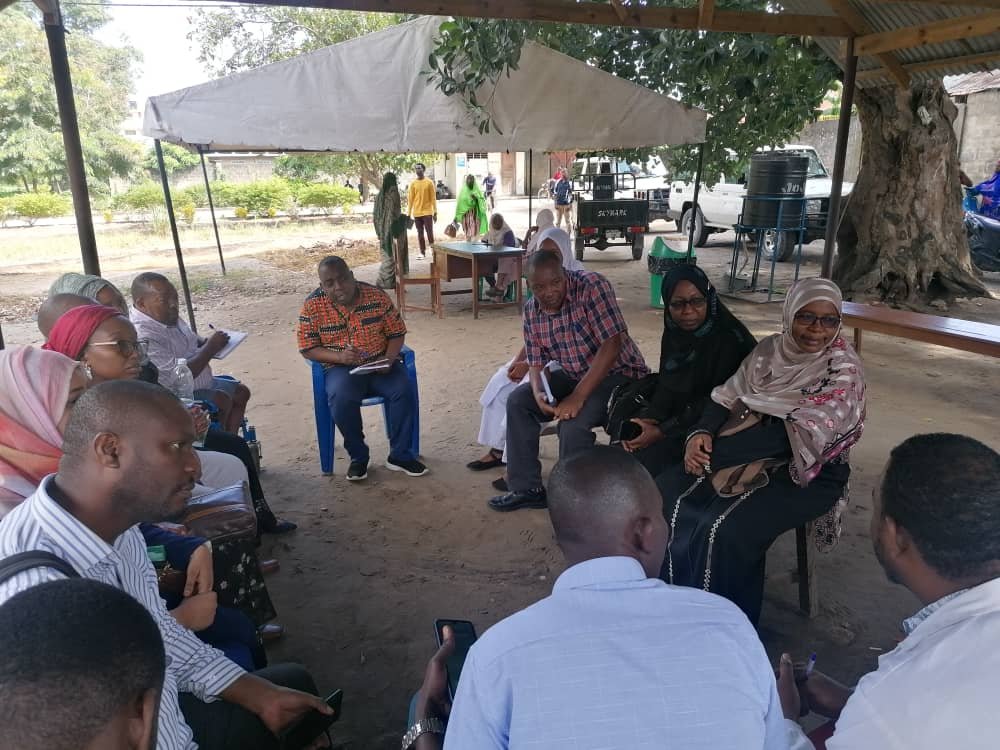The Importance of Biology & Natural Life for a Sustainable Future. Discover the vital role of biology & natural life in building a sustainable future. Let’s embrace nature for a healthier planet together!

Can Biotech Invent a Sustainable Future for the Beauty Industry? | Jasmina Aganovic | TEDxBoston
The Importance of Biology & Natural Life for a Sustainable Future
The Role of Biology in Sustainable Practices
Biology provides insights about life & ecosystems. Its principles guide sustainable practices. By studying organisms & their interactions, we understand how to balance human needs with environmental health. For instance, agriculture uses biological knowledge to enhance crop yield & reduce waste.
Using biological methods in agriculture decreases pesticide use. These methods include organic farming, which embraces natural processes. Crop rotation & polyculture promote biodiversity, which helps combat pests naturally. Knowledge of soil biology leads to better fertility practices. Worms & microbes play significant roles in soil health, supporting plant life.
On top of that, biology aids in assessing the health of ecosystems. Indicators help us monitor biodiversity. This information guides conservation efforts & restoration projects. Protecting endangered species becomes more effective with a biological approach. We ensure they can thrive in their natural habitats.
Biology greatly influences renewable energy sources. Microorganisms & algae have significant potential in biofuel production. These resources can lessen our reliance on fossil fuels. By exploring how nature generates energy, we mimic these processes for sustainable energy solutions.
Finally, biology teaches us about human impact on nature. By learning about pollution & habitat destruction, we can find sustainable solutions. Strategies to restore ecosystems stem from biological studies. Thus, biology is essential for creating a sustainable future.
Natural Life & Its Contribution to Sustainability
Natural life refers to relationships within ecosystems. Every organism, microbe, & plant contributes to these systems. Understanding these contributions can enhance sustainability. Natural environments provide resources & ecosystem services essential for survival.
Forests, for example, offer timber, oxygen, & carbon storage. They regulate climate & provide habitats for countless species. Protecting forests is critical for a sustainable future. Reforestation initiatives help restore damaged ecosystems. They create a habitat for wildlife & capture carbon effectively.
Wetlands are another valuable ecosystem. They filter water & provide flood protection. Healthy wetlands reduce the impact of extreme weather. Restoration projects focus on preserving these natural habitats. Engaging local communities enhances success rates for such projects.
Natural life also includes the concept of biodiversity. Biodiversity ensures resilience in ecosystems. Species diversity leads to functional ecosystems capable of withstanding changes. By preserving diverse habitats, we create more robust systems capable of supporting life.
Lastly, natural life involves indigenous wisdom. Many indigenous communities possess knowledge about sustainable practices. Their traditional ecological knowledge inspires modern sustainability efforts. By valuing these teachings, we can learn to live harmoniously with nature.
The Importance of Conservation Biology
Conservation biology focuses on protecting biodiversity. It examines ways to maintain & restore the balance between species, ecosystems, & human activity. As human activities threaten wildlife, conservation biology becomes critical. Its methods strive to mitigate adverse impacts on natural systems.
One method involves creating protected areas. These areas safeguard critical habitats from development. They allow ecosystems to thrive undisturbed. National parks & wildlife reserves preserve vital biodiversity hotspots. Effective management strategies are necessary for their success.
Another technique entails habitat restoration. Restoration projects work to revive damaged ecosystems. This might involve replanting native species or removing invasive ones. Collaboration between scientists & local communities amplifies these efforts.
Conservation biology also focuses on policy advocacy. Formulating & enforcing laws is crucial for protecting endangered species. Legislation aims to control poaching & illegal trade. It can also regulate land use practices, preventing habitat destruction.
And another thing, conservation efforts require public education. Awareness campaigns foster appreciation for wildlife. Educating communities about local ecosystems generates support for conservation initiatives. Informed citizens can contribute to preserving biodiversity.
Tools such as genetic databases identify endangered species. These databases help monitor & protect critical populations. Thus, conservation biology plays a vital role in ensuring a sustainable future.
Ad
Visit Now
Interconnectedness of Biological Systems & Humans
The relationship between humans & biological systems is vital. Our survival relies on healthy ecosystems. They provide food, clean water, & air. Yet, human actions disrupt these systems. Understanding this interconnectedness is crucial for sustainable development.
For instance, overfishing impacts marine biodiversity. Removing fish from the ocean disrupts food chains. This leads to a decline in fish populations & affects coastal communities. Sustainable fishing practices are necessary to maintain ocean health.
Similarly, pollution from urban areas harms aquatic ecosystems. Chemicals enter waterways, harming wildlife & people. Implementing stringent regulations can help limit this pollution. Sustainable urban planning improves the quality of life.
Deforestation is another concern. Trees capture carbon & provide oxygen. When we cut down forests, we exacerbate climate change. Sustainable forestry practices aim to balance economic needs & environmental health.
Education & advocacy empower communities. Local efforts can lead to significant changes. By promoting sustainability, individuals can impact their surroundings. They help create healthier ecosystems that support life.
On top of that, citizen science plays a part in this interconnectedness. Communities monitoring local biodiversity contribute valuable data. This information assists conservationists in making informed decisions. Together, we can forge a sustainable future.
Innovations in Biology for a Sustainable Future
Innovations in biology offer promising solutions for sustainability. Biotechnological advancements are transforming agriculture & resource management. These innovations can reduce our ecological footprints.
Precision agriculture is one example. This approach uses technology for efficient resource use. Sensors monitor soil conditions, weather, & crop health. Farmers can apply water & fertilizers more effectively, reducing waste.
Bioremediation is another innovative technique. It employs living organisms to clean polluted environments. Microbes can degrade oil spills or absorb heavy metals. Utilizing nature for pollution cleanup emphasizes sustainability.
Energy production also benefits from biological innovations. Algae-based biofuels are gaining attention. These fuels can provide renewable energy with reduced emissions. Research into genetic engineering further enhances the potential of biofuels.
On top of that, synthetic biology enables the design of new organisms. These organisms can produce valuable materials sustainably. For instance, creating bacteria that generate biodegradable plastics is a breakthrough. They replace harmful fossil fuel products.
Finally, education in biological sciences fosters innovation. Students & researchers explore new sustainable technologies. Institutions can encourage this effort through dedicated programs & funding. This paves the way for advancements that support ecological balance.
Community Involvement in Promoting Sustainability
Community involvement is essential for fostering sustainability. Engaging local populations in conservation efforts leads to better outcomes. Communities often have the best understanding of their environments.
One effective method is community gardening. These gardens promote local food production while enhancing biodiversity. They encourage healthier lifestyles & reduce reliance on industrial agriculture.
Local initiatives can also focus on habitat restoration. Volunteers participate in reforestation & river clean-up projects. These activities boost communal ties while improving environments.
Education programs can empower communities. Schools & organizations can promote biological literacy. Workshops can teach residents about ecosystems & the importance of conservation. Informed citizens make better decisions for sustainability.
Promoting local stewardship models can enhance engagement. Residents act as stewards of their land, encouraging responsible practices. This approach builds a sense of ownership & commitment to sustainable practices.
Online platforms connect communities globally. They foster sharing of ideas & best practices for local sustainability efforts. Engaging in social media campaigns can raise awareness & promote collective action.
Regenerative Practices to Restore Natural Life
Regenerative practices aim to restore ecosystems while providing for human needs. These methods are gaining popularity as part of sustainability efforts. Regeneration restores health to the soil, water, & biodiversity.
Agriculture significantly benefits from regenerative practices. Techniques such as cover cropping & no-till farming enhance soil health. Healthy soils can sequester carbon & reduce greenhouse gas emissions.
Livestock management can also become regenerative. Rotational grazing allows grasslands to recover. This practice encourages soil health & increases biodiversity. Healthy rangelands support various species.
Wetland restoration promotes natural habitats. Wetlands filter pollutants & offer flood protection. Rehabilitating these areas improves local ecosystems & community resilience.
And another thing, urban areas can adopt regenerative practices. Green spaces in cities enhance air quality & reduce heat. Urban agriculture can inspire local food systems while promoting biodiversity.
Engaging local communities is vital in regeneration efforts. They bring valuable knowledge & experience. Collaborating on projects ensures they meet community needs while supporting ecological restoration.
Individual Actions Towards Sustainable Living
Individual actions contribute to a sustainable future. Every person’s choices can reduce their ecological footprint. Simple changes in daily habits can lead to significant global impacts.
- Reduce, reuse, recycle to minimize waste.
- Choose local & organic foods to support sustainable agriculture.
- Conserve water by fixing leaks & using water-efficient fixtures.
- Opt for public transport, biking, or walking to decrease carbon emissions.
On top of that, becoming involved in local conservation efforts can amplify individual impact. Volunteering for local clean-up days or wildlife monitoring fosters community ties. It raises awareness about local ecosystems & generates support.
Advocacy is another avenue for change. Supporting policies that protect the environment leads to lasting effects. Contacting representatives & voicing concerns about conservation issues can drive change.
Lastly, educating others about sustainability is crucial. Sharing knowledge with friends & family encourages collective action. The more people engage, the greater the impact on fostering a sustainable future.
“Sustainability begins with individual actions that inspire change.” – Maya Thompson
The Future of Biology & Natural Life in Sustainability
The future of biology & natural life in sustainability looks promising. Scientists & communities are working together for solutions. Research drives innovations that address environmental challenges.
Collaboration between disciplines enhances our approach. Combining biology, technology, & social sciences fosters holistic solutions. This interdisciplinary approach increases innovation & effectiveness.
And another thing, the integration of traditional knowledge adds depth. Indigenous practices offer time-tested methods for sustainable living. Respecting these practices opens pathways for collaboration.
Public awareness plays a role in shaping the future. As more people learn about sustainability, actions increase. This shift drives demand for sustainable products & practices.
Investment in research is crucial for future advancements. Funding supports projects that explore biological solutions to environmental issues. Scientific progress leads to innovative approaches in sustainability.
Ultimately, the future depends on united efforts. Governments, communities, & individuals must collaborate. Together, they can shape a sustainable world based on the principles of biology & natural life.

Why is biology important for a sustainable future?
Biology is crucial for a sustainable future as it helps us understand the complex interactions within ecosystems & the impact of human activities on the environment. By studying biological processes, we can develop strategies to conserve biodiversity, manage resources sustainably, & address challenges like climate change & pollution.
How does natural life contribute to sustainability?
Natural life contributes to sustainability by maintaining ecological balance & providing essential services such as clean air, water purification, pollination, & soil fertility. Protecting natural ecosystems ensures that these services continue to support human well-being & the health of the planet.
What role does biodiversity play in sustainability?
Biodiversity plays a vital role in sustainability by enhancing ecosystem resilience, enabling adaptation to environmental changes, & providing a wide range of resources such as food, medicine, & materials. A diverse biological landscape ensures the continued functioning of ecosystems & the services they provide.
Why is understanding ecosystems important?
Understanding ecosystems is important because it helps us recognize how living organisms interact with each other & their environment. This knowledge is essential for developing effective conservation strategies, managing natural resources, & implementing policies that promote environmental sustainability.
How can biology help address environmental issues?
Biology can help address environmental issues by providing insights into the causes & consequences of these problems. Through research & innovation, biology can inform sustainable practices, promote ecological restoration, & develop technologies aimed at reducing human impact on the planet.
More Scientific Knowledge = Scientific Knowledge
In summary, understanding the importance of biology & embracing our natural life are crucial steps toward building a sustainable future. By learning how living things interact with each other & their environment, we can make better choices that protect our planet. Simple actions like recycling, conserving water, & supporting local ecosystems can make a big difference. Together, we can ensure that future generations enjoy a healthier planet. Let’s all take a step forward & appreciate how biology & natural life guide us in living sustainably.



